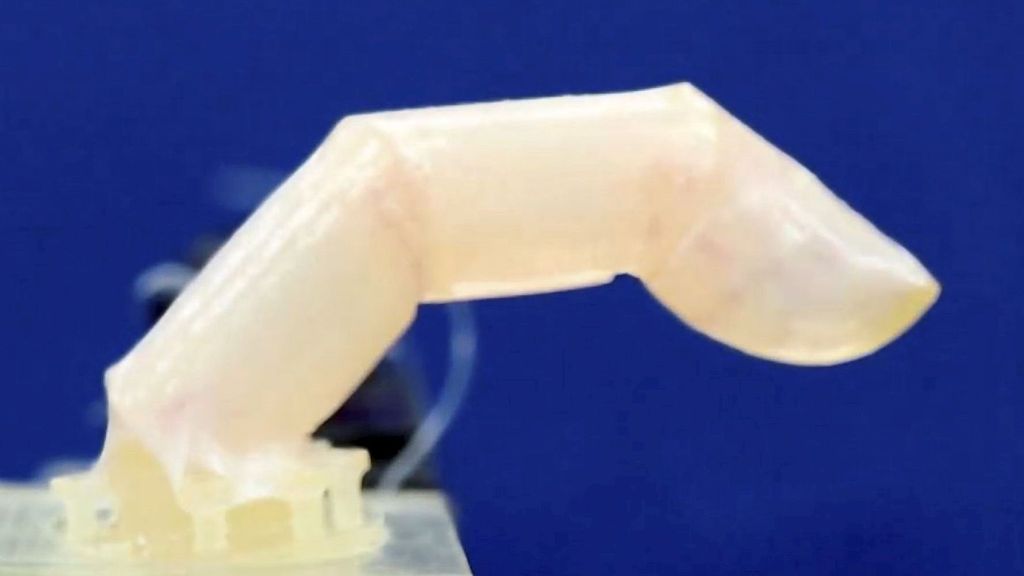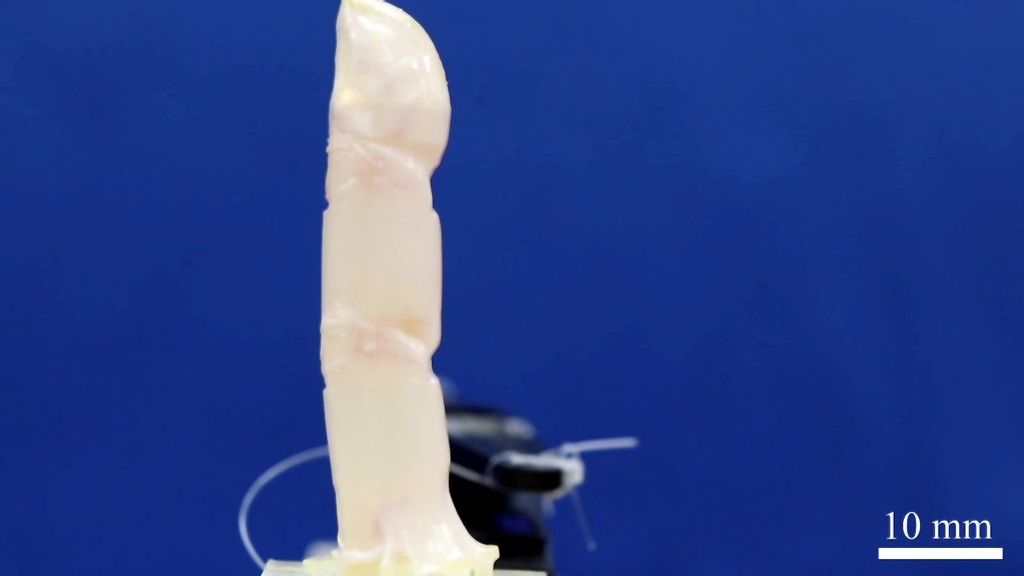A way of covering a robotic finger with living human cells has been developed by Japanese scientists.
It may sound like something from the realms of sci-fi classics such as Blade Runner or Ex Machina, but researchers at the University of Tokyo are bringing androids a major step closer by crafting living human skin on robots.
The method not only gave a robotic finger a skin-like texture, but also provides water-repellent and self-healing functions.
Study first author Professor Shoji Takeuchi said: “The finger looks slightly ‘sweaty’ straight out of the culture medium.
“Since the finger is driven by an electric motor, it is also interesting to hear the clicking sounds of the motor in harmony with a finger that looks just like a real one.”
Looking “real” like a human is one of the top priorities for humanoid robots that are often tasked to interact with humans in healthcare and service industries.
Takeuchi says a human-like appearance can improve communication efficiency and evoke likability.
While current silicone skin made for robots can mimic human appearance, he explained that it “falls short” when it comes to delicate textures such as wrinkles and lacks skin-specific functions.

Previous attempts at fabricating living skin sheets to cover robots have also had limited success, since it’s challenging to conform them to dynamic objects with uneven surfaces.
Takeuchi said: “With that method, you have to have the hands of a skilled artisan who can cut and tailor the skin sheets.
“To efficiently cover surfaces with skin cells, we established a tissue molding method to directly mold skin tissue around the robot, which resulted in a seamless skin coverage on a robotic finger.”
To craft the skin, the Tokyo team first submerged the robotic finger in a cylinder filled with a solution of collagen and human dermal fibroblasts, the two main components that make up the skin’s connective tissues.

Takeuchi says the study’s success lies within the natural shrinking tendency of the collagen and fibroblast mixture, which shrank and tightly conformed to the finger.
Just like paint primers, the layer provided a uniform foundation for the next coat of cells – human epidermal keratinocytes – to stick to.
The cells make up 90 percent of the outermost layer of skin, giving the robot a skin-like texture and moisture-retaining barrier properties.
Takeuchi said: “The crafted skin had enough strength and elasticity to bear the dynamic movements as the robotic finger curled and stretched.
“The outermost layer was thick enough to be lifted with tweezers and repelled water, which provides various advantages in performing specific tasks like handling electrostatically charged tiny polystyrene foam, a material often used in packaging.”

When wounded, he said the crafted skin could even self-heal just like humans’ with the help of a collagen bandage, which gradually morphed into the skin and withstood repeated joint movements.
Takeuchi said: “We are surprised by how well the skin tissue conforms to the robot’s surface.
“But this work is just the first step toward creating robots covered with living skin.
“The developed skin is much weaker than natural skin and can’t survive long without constant nutrient supply and waste removal.”
Now Takeuchi and his team plan to address those issues and incorporate more sophisticated functional structures within the skin, such as sensory neurons, hair follicles, nails, and sweat glands.
He added: “I think living skin is the ultimate solution to give robots the look and touch of living creatures since it is exactly the same material that covers animal bodies.”
The study was published in the journal Matter.







